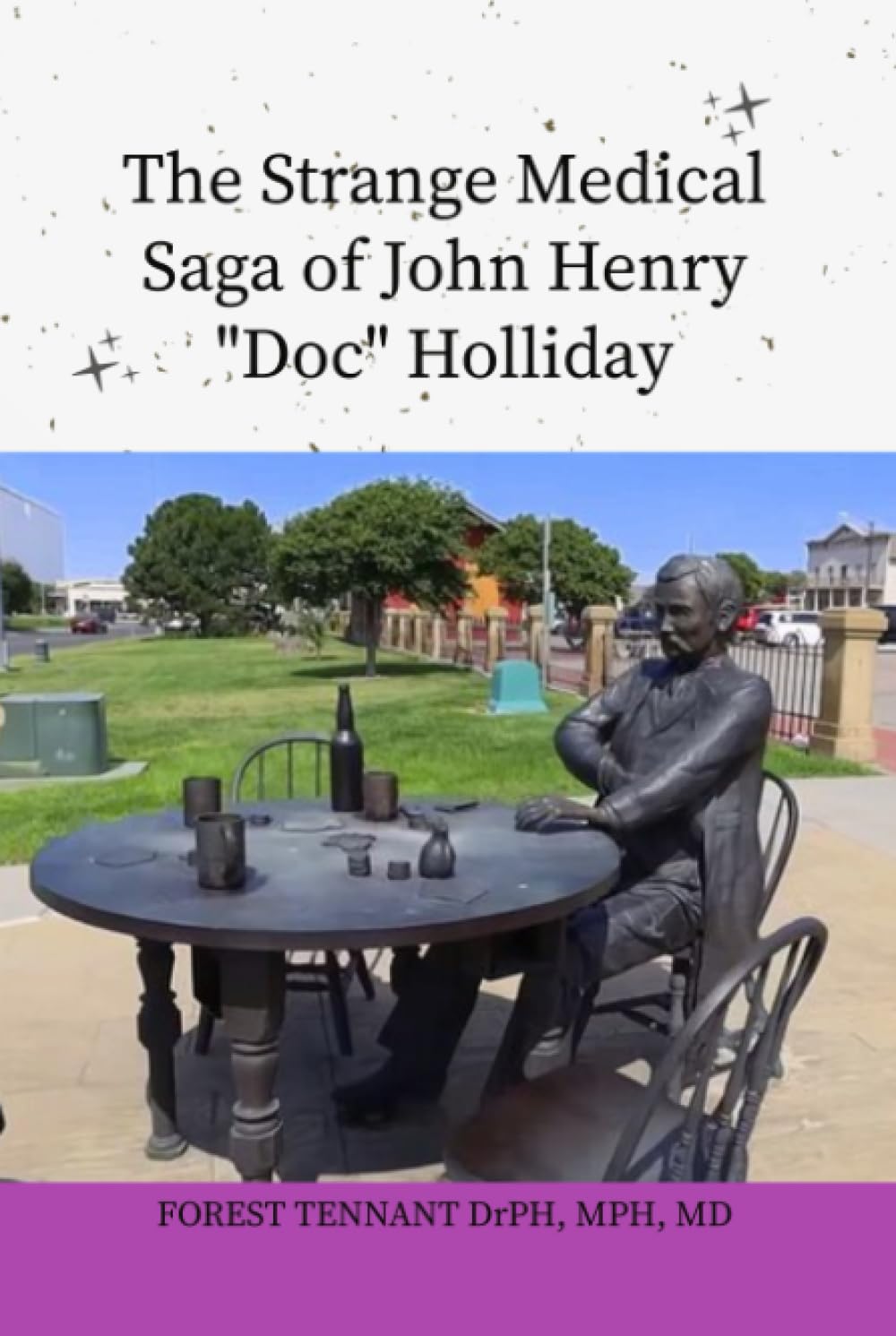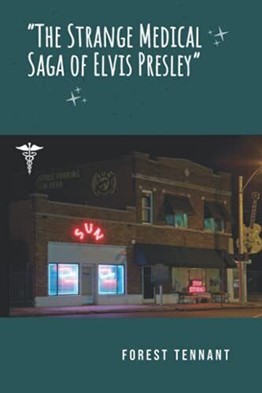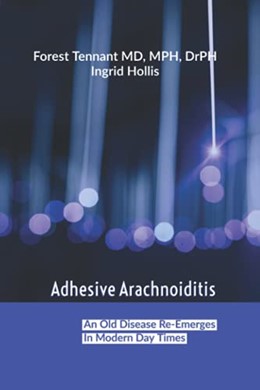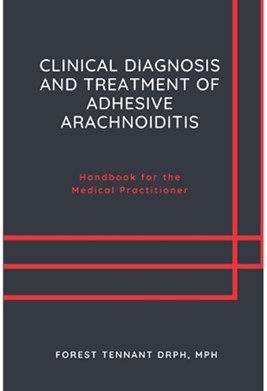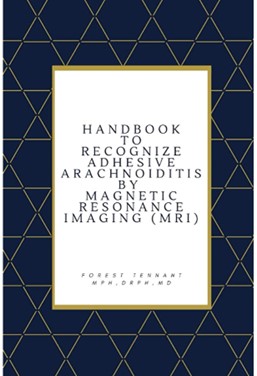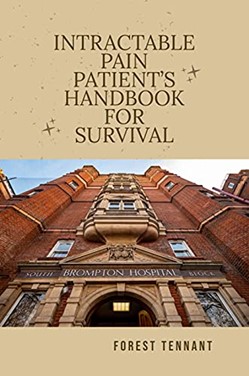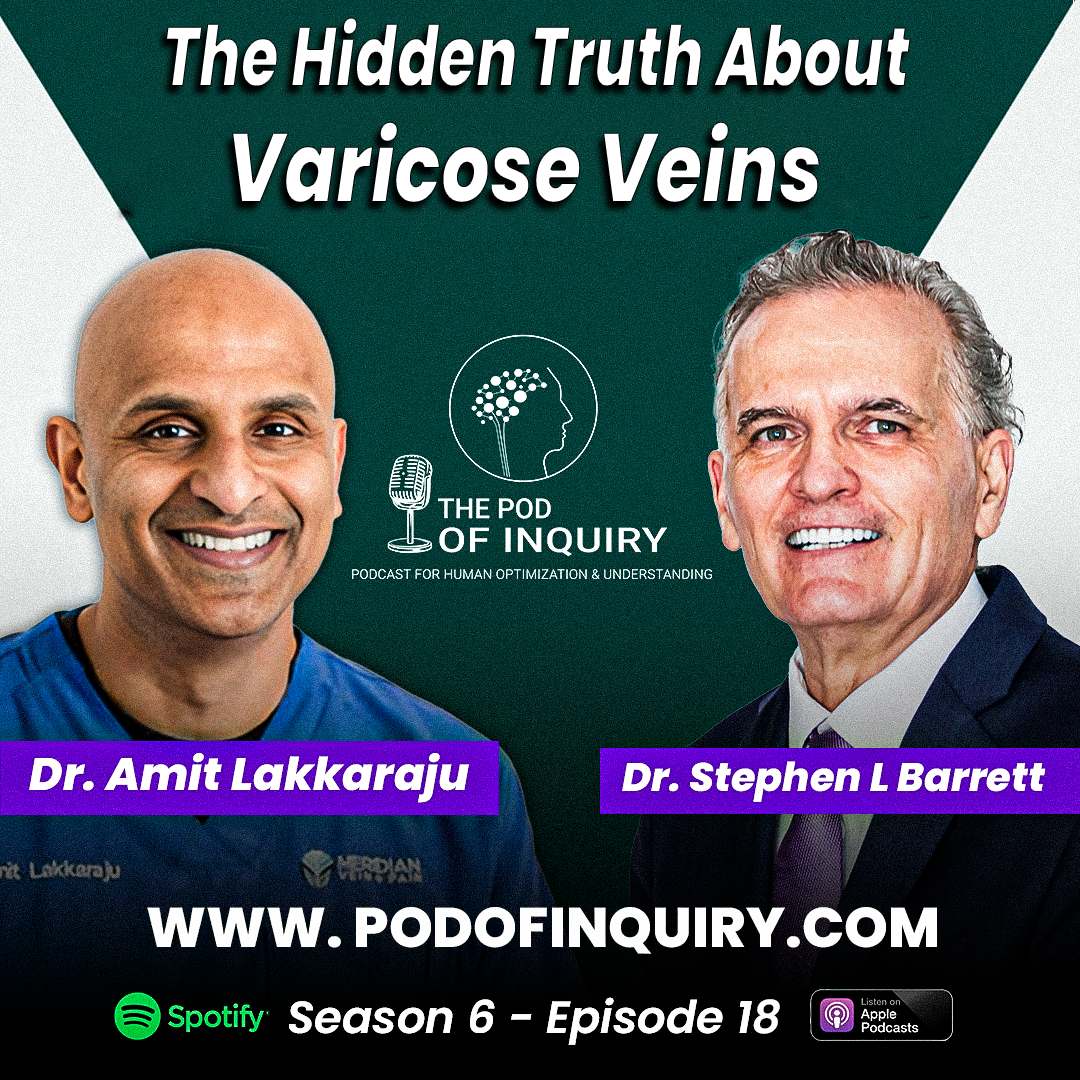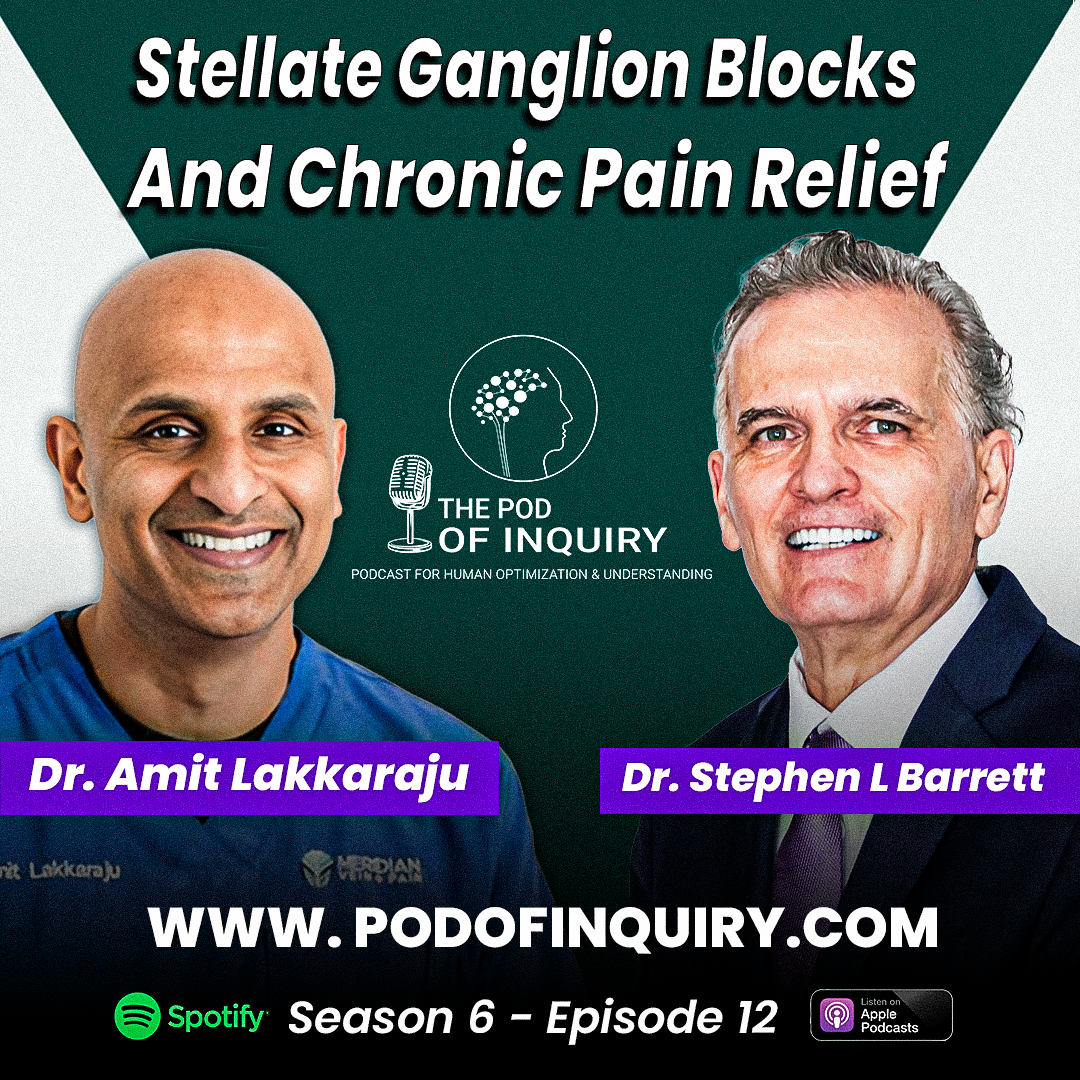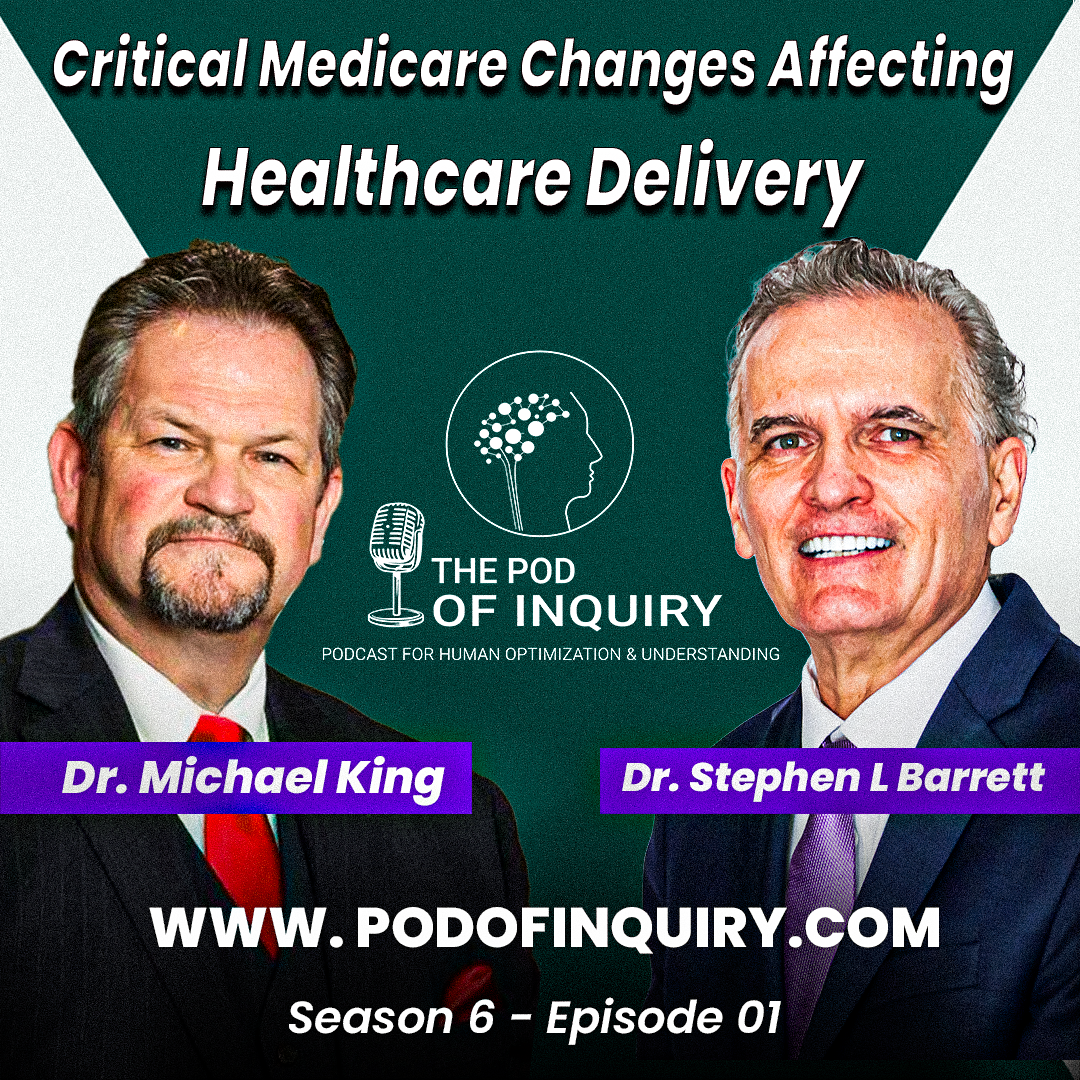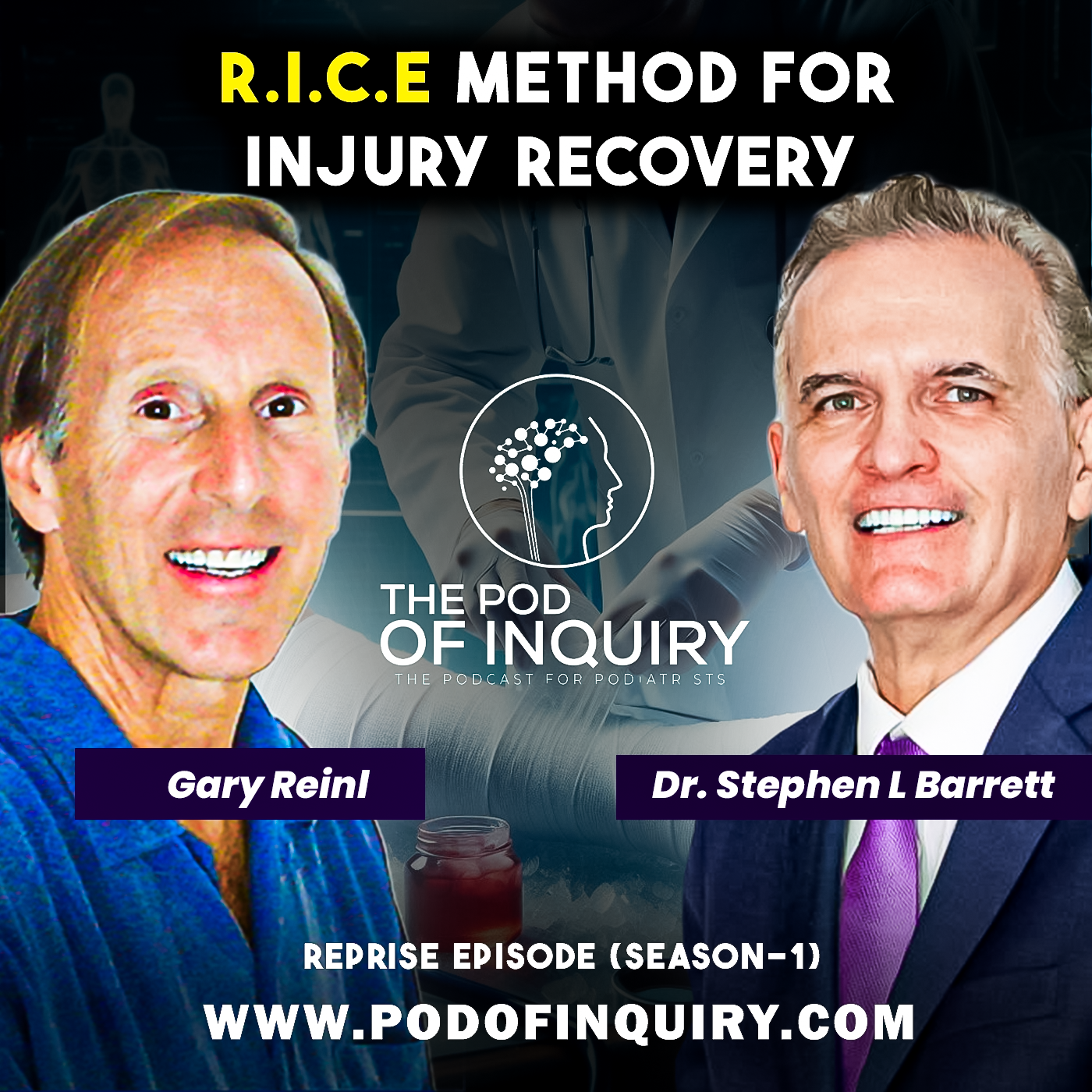Show Notes
Distinguishing the Drug Seekers [43:30]
- Barrett used pharmacogenetic testing in the past
- Patients would come in and named the medications that don’t work; they named the medication they want.
- There is the perception that they’re a drug seeker, but a pharmacogenetic test was run on them.
- So if they don’t have any P450 2D6, or 3A4 enzyme; they can’t metabolize codeine to morphine.
- They don’t want it because they’re a drug seeker; they did perfectly fine taking the morphine sulfate.
- The insurance companies said they’re not going to pay for that anymore.
- It’s difficult now to be a physician and to take care of the patient, at the same time treating the computer through the electronic medical records burden, as well as treating their third-party insurance that will pay for something or won’t.
- They had to discontinue the pharmacogenetic testing because it was just too expensive, unless it was a rare case.
- Barrett would also a lot of times when patients would come in after a surgery
- At two weeks, they should not be needing much narcotic at that standpoint.
- They would do a urine test and there’s no drug in that urine.
- There’s the boyfriend or husband telling how much pain the patient is having.
- Barrett looks at it, everything’s perfect.
- They were duping that they needed this medication to get it to their significant other, because that person had a problem.
- Barrett says to handle this by really taking time to figure out why this patient’s asking or demanding more medication.
“There’s a lot of people out there still suffering and pain that maybe necessarily wouldn’t have to if we had a little bit more judicious approach with some of these things.” –Dr. Stephen Barrett
The Pros and Cons of Advancing Technology [47:02]
- Today, we have such diagnostic technology that can diagnose a lot of things.
- The genetic cytochrome testing is a good example.
- The new cytokine panels, a new hormone panels, a new MRIs.
- All practitioners want the best for patients.
- I have yet to see a patient that could afford to get or the insurance company to pay for all the tests.
“We’ve got the diagnostic technology, but it is so expensive that we can’t use it like we’d like to.” –Dr. Forest Tennant
- Barrett gave an example that happens in his practice once a month.
- A patient with intractable pain will have a trial stimulation for a peripheral nerve stimulator.
- The patient will say they’ve never felt this good since injury or it’s 50% better.
- You’ve documented that you’re able to reduce their pain with a peripheral nerve stimulator, and their insurance will then deny that stimulator.
“If we’re spending all of these millions of dollars on the fight against in judicious use of opioids, why not maybe shift some of those health care dollars to technologies that will decrease the necessity of these drugs; it’s a paradigm shift.” –Dr. Stephen Barrett [48:40]
- Tennant thinks society will but it’s so painful to make that shift.
- Tennant thinks the electronic medical record has its pros and cons.
- When it comes to preventing overdoses and abuse of drugs, the medical record is a hazard, not a help.
“The belief that you can make a diagnosis simply on symptoms is not true.” –Dr. Forest Tennant
- There is no substitute for having a practitioner examined physically the patient, takes the history of the family, and then began treatment one step at a time.
- There is this belief that we don’t need to even see a practitioner then we’ll be fine.
- This idea that we can get away from personal contact in medical practice is going to cause a lot of problems and hazards.
- People are advocating that we treat only on symptoms, not a diagnosis in pain management.
- One of our major problems is if people are going to pain clinics, they are given all kinds of drugs but do not have a diagnosis.
- Chronic pain is not a diagnosis, that is a symptom of some diagnosis.
“The idea of medicine is age old; there’s still a fifth physical exam, a history, symptoms, a physical exam, a family member, a first degree loved one who is there to support and help you confirm the diagnosis.” –Dr. Forest Tennant [52:20]
- People think that we can substitute this basic system with technology.
- Barrett agrees and can’t tell how many times a patient will thank him for physically examining or listening to them.
- In a traditional practice, it’s impossible to spend one hour with a patient.
- If you don’t spend that time really going into the HPI, it’s like a crime scene you have to gather all of the data you possibly can to help you start barking up the right tree so that you can make a diagnosis.
- In this process, insurance companies have driven this somewhat, because they will not pay for a procedure unless it’s matched up to a diagnosis code that they like.
- An example is in peripheral nerve blocks. They want a diagnosis of Other chronic pain.
- In order for us to get paid for that, we have to have a code that that works.
- Barrett just wants to take care of patients but handling insurances is a necessity evil that he has to deal with.
“We are symptom treaters, not whole body treaters.”
Treat Patients Metabolically, Instead of Symptomatically [56:00]
- Barrett could do some miraculous things with isolated peripheral nerve surgeries.
- Some patients got grand slams, other patients were a strikeout, and most of the patients would get 70% really well.
- Barrett started looking at this person metabolically.
- No one’s taking time anymore, regardless of specialty to really look at what is the status of this patient from an overall health standpoint.
- If we get them better, from a general metabolic standpoint, they’re going to heal faster.
- If we can get them walking and exercising, it seems to have a pretty therapeutic effect.
- Tennant says patients should better take care of themselves a little better.
- It is imperative that patients and families understand the disease they have if they have a chronic disease.
- They’re going to have to know the name of their disease, to understand where it came from, why it is there.
- They have to understand that you have to do more than just ask for a prescription or surgery down at the doctor’s office.
- If you have a chronic painful condition, you have a three component protocol.
- Number one, you’ve got to reduce your inflammation and autoimmunity.
- Number two, you got to regenerate damaged tissue.
- Number three, you got to have pain control.
- If you are going to do all three is adversarial to certain people in our society and to certain components of the medical system.
Inflammation and Autoimmunity [59:30]
- The first inflammatory marker was developed around 1926, or so called the erythrocyte sedimentation rate.
- There was a reactive protein called the C-reactive protein and inflammation would activate
- We needed something that was better; something that would pick up low levels of inflammation on a test to let the practitioner, patient, and family know that we are not where we should be.
- Anybody who’s followed any advances in medical science knows that almost all chronic medical conditions are tied to inflammation and auto immunity
- Thanks to the COVID virus, people are starting to understand a lot more about auto immunity and post infectious auto immunity, which is not a new concept.
- Inflammation and autoimmunity are tied together.
- When it comes to regeneration of damaged tissues, another term is healing.
- There are still people spreading the misconception that you can’t regenerate damaged tissue
- Exercise, nutrition, psychological therapies try to rebuild damaged tissue?
- In some cases, anabolic steroids or hormones or electoral medical devices regenerate damaged tissue
- You’re suppressing or reducing inflammation or autoimmunity trying to regenerate tissues.
- Pain control is just symptomatic.
- Our new surgery is trying to regenerate tissue and healing it
Palmitoylethanolamide and Other Supplementations [1:03:28]
- One of the nice scientific advances is that some research scientists have discovered that the body makes a chemical.
- So technically is a fatty acid; it is not a hormone nor a neurotransmitter
- The body makes a chemical called palmitoylethanolamide or PEA.
- When you get pain or inflammation, the body makes this in certain tissues and puts it into the blood.
- The idea is to use this compound to suppress inflammation and heal our pain.
- From a longevity standpoint, Dr. Tennant doesn’t know enough if PEA drops off as part of the aging mechanism.
- PEA is very safe.
- A lot of people and new entrepreneurial companies around the globe are trying to bring back a lot of old herbal and botanical products from centuries of use
- Curcumin, Serrapeptase, Luteolin, Reservatrol, and some others.
- Frankincense and myrrh, Boswellia
- On the market today, there are a lot of nonprescription herbal agents and pain agents; this has been a very good movement.
- People do need to know how to take care of their minor pains
- This discovery of palmitoylethanolamide, which is natural in the blood of all humans, is one that Dr. Tennant uses all the time.
- Tennant recommends that right out front for anybody with chronic pain
- Even if patients are already on an opioid like morphine, you can add PEA to it
- It’s a little controversial, but people are getting pain relief from CBD products and medical marijuana
- There’s another herbal product called kratom that’s got a lot of pain relieving activity.
- There’s a lot of good self-help going on out there.
Some Controversies about Pain [1:07:50]
- Certain sources of media in this country are trying say that pain is all the same
- No, it’s a wide spectrum
- Certain articles say you’re going to be fine with acupuncture, mindfulness or massage therapy
- No, that’s not true.
- That’s going to help certain people, but there’s severity of pain
- Some people who have pain beyond comprehension are going to need the very best
- It’s got to be expensive, it’s going to need specialists
- Some people alter these ideas: patients shouldn’t be treated; they’re just costing society a lot of money and they ought to just go ahead and die off.
- Physicians are going to try to keep people comfortable and give them some longevity and a quality of life.
- Another controversy is from people or societies that believe in assisted suicide to government agencies that we shouldn’t be keeping these people alive.
- Tennant is bringing up a terribly sensitive issue: the idea that we have too much population, and we have people who are too disabled, who can’t work and aren’t productive and so they shouldn’t get the best of medical care.
- Physicians do not share this belief.
- Barrett says there are some severe recalcitrant pain patients have zero quality of life and are so debilitated.
- They’ll go out of state, get a psilocybin treatment up in Oregon
- They get lucky enough to get put in one of the clinical trials at Emory or Harvard, and all of a sudden, their life has been totally changed.
- They were pretty much not willing to live there until that opportunity came to them.
- Barrett is not trying to advocate for illegal or illicit uses of drugs, but thinks that if we want to solve this crisis of recalcitrant pain and an opioid overdose, there needs to be some look at the psychedelics.
- Some of these mental conditions are correlative with pain.
- Tennant has a story about the suicide issue.
- Kevorkian, when he was still alive, had called Dr. Tennant and said he had some clients that told him if they could just get pain treatment, they wouldn’t need his services.
- Tennant is a consultant to two or three suicide groups.
- People are going to have to make that decision very personally
- It’ll be like abortion, there are certain states or certain countries, that accept suicide.
- Tennant hates to see somebody commit suicide because they can’t get a simple prescription for some valium and morphine.
The Worst Pain There Is [1:14:12]
- Arachnoiditis is not a spider bite.
- The arachnid word is actually a tissue that lines the brain on the spinal cord and the spinal canal; it was called arachnoid.
- After they invented the microscope a couple of centuries ago, they looked and it looks like a spider web.
- It is the inflammation of the arachnoid membrane.
- The arachnoid lining of the spinal canal can attach to the nerves and cause a mass because adhesions are there and it’s a nerve entrapment thing.
- Where spinal canal nerve roots get attached to the spinal canal cover, and it’s called Adhesive Arachnoiditis.
- Adhesive Arachnoiditis has replaced RSD.
- No pain exceeds Adhesive Arachnoiditis.
- Once you’ve seen a few cases of Adhesive Arachnoiditis, you’ve just got to believe that this has got to be prevented.
- If we figure if we can figure out how to deal with Adhesive Arachnoiditis, we can figure out how to deal with slipped discs, neuropathies, arthritic knees, genetics, and others.
- Tennant at least got protocols for now, but doesn’t have any cure or specific drugs for it.
- Tennant is finding out certain exercises, diets, medications that really do help it.
- Adhesive Arachnoiditis is the end product of a bunch of bad things that happened to you.
- You can start off with Ehlers Danlos, a genetic disease, an auto accident, slipped discs, catch an infection called Epstein Barr, infectious mononucleosis, and develop auto immunity like Lyme disease; you got to have two or three bad things happen to you.
- It’ll glue the spinal canal cover to the nerve roots, and then you’ve got it.
- Sometimes it happens inadvertently, at a time a woman has to get an epidural shot at delivery or an epidural shot for chronic discs.
- It’s not the doctor’s because the person who’s got auto immunity, they’ve introduced some other trauma to it.
- It’s got multiple causes; you don’t just get any one cause of it.
- It’s related to Multiple Sclerosis. Multiple Sclerosis affects the spinal cord up in the thoracic area usually.
- This can occur in the neck, but it’s mainly in the lumbar-sacral area.
How Contrast MRI has been helpful in diagnosing Adhesive Arachnoiditis [1:20:13]
- At the end of Dr. Tennant’s career, his desire to work was because of the new MRI technology.
- With a contrast MRI, you can see the spinal fluid, the nerve roots, and the spinal cover independently
- Now, a lot of these people that we were calling failed back syndromes, chronic back, or psychological problems, have this condition.
- Tennants has had their research project about three or four years, and they’re already starting to see a lot of results.
Aside from MRIs, how do you clinically diagnose Adhesive Arachnoiditis? [1:21:47]
- Tennant got a phone call from a lady in Texas.
- She needed to talk because she woke up that morning and thought urine was running down her leg. She looked and she didn’t have any urine on her leg. Later, she thought there were bugs crawling on her leg.
- If you think spiders are crawling on your leg, or urine is there and there’s no urine or water there, you probably got it.
- It’s usually unilateral
- You wouldn’t think you’d get blurred vision from a back problem.
- The spinal fluid is made in the brain and goes down the spinal canal, like a pipe, and then back up.
- This is a mash in the canal and it interferes with a spinal fluid flow.
- It turns out the eye fluid in your eye is connected to your spinal fluid in the canal.
- They can get blurred vision.
- The big one is anybody who’s got chronic back problems.
- If you’ve got a back problem that is bad enough to take medication every day, you better be evaluated for Adhesive Arachnoiditis.
- If you try to raise the leg and it hurts, think Arachnoiditis
- You’ve got this patient who keeps coming in and says his back just hurts, and he just got to have that Percocet or Vikon and they can’t live without it, think Arachnoiditis.
- The average person that goes to a chiropractor, the massage therapist, the physician, the nurse practitioner, the podiatrist is not in this category.
- Maybe 1 in every 500 back pain patients; it’s not all that common.
Adhesive Arachnoiditis and Suicide [1:25:00]
- Tennant is working on John Kennedy’s book right now. John Kennedy had Adhesive Arachnoiditis.
- Tennant wishes he’d have known this 20 years ago
- One of his interest in suicide is because Adhesive Arachnoiditis patients don’t get help and they commit suicide.
- I hope we’ve learned to prevent these cases, because they can be prevented on several different fronts.
Closing Statement of Dr. Forest Tennant [1:27:43]
- He has had a nice long career.
- In his travels, what he finds in the United States is:
“People care about people. The doctors and nurses care about their patients. Patients care about other patients.” –Dr. Forest Tennant
- People say “What are they teaching in medical school?” and “These nurses don’t care.” but he sees the best trained medical people we’ve ever had.
- People who’ve got all this technology but have not forgotten what they’re here to do.
- He is inspired by what he sees: best doctors, best nurses, and best technology.

